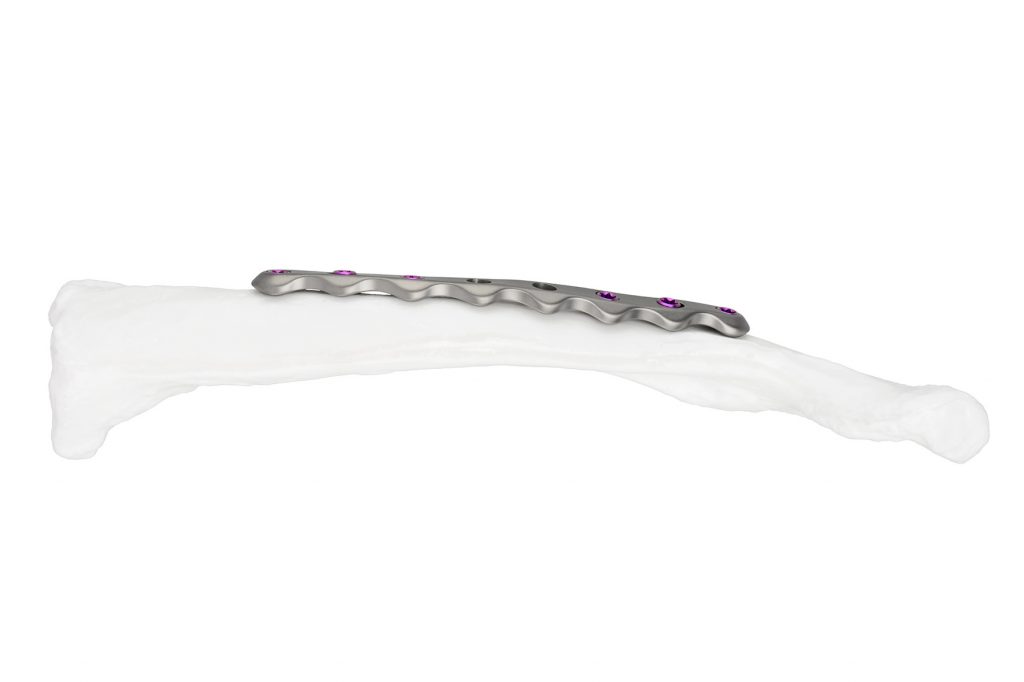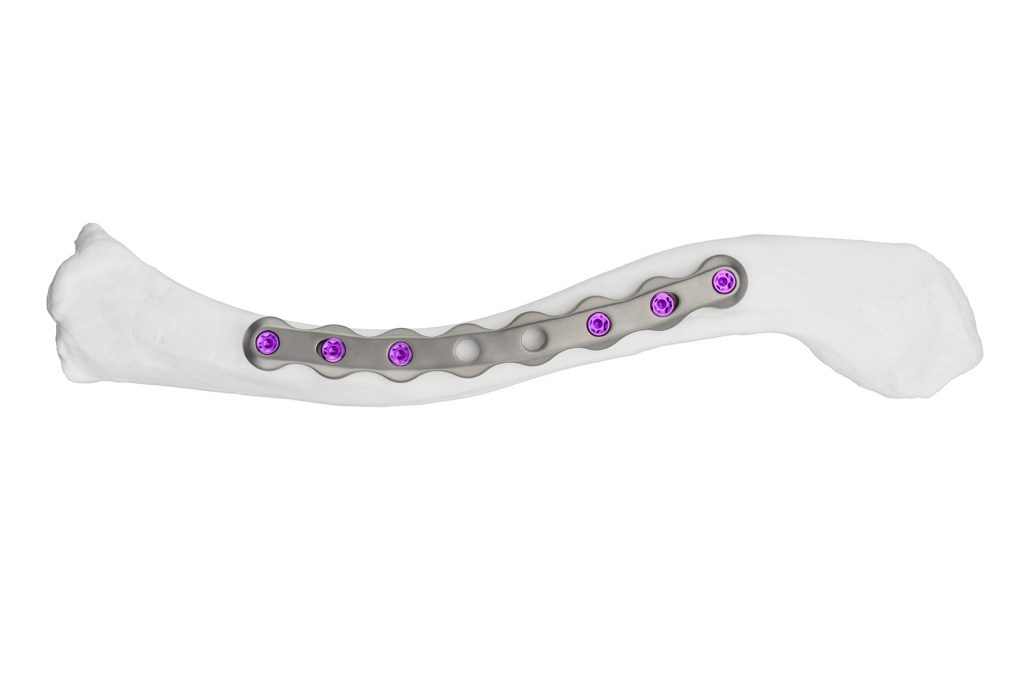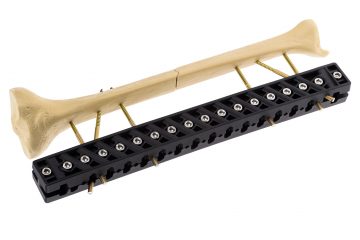Point Contact Locking Plate
SCYON’s Point Contact Locking Plate (PCLP) system was developed to provide trauma surgeons with the most advanced, yet affordable plating system to reliably treat patients with the best post-operative outcome. The current sizing is intended for diaphyseal forearm fractures.
The main biological benefits of the PCLP system are:
- Increase resistance to infection
- Reduce stress shielding
- Increase bone health and strength around the plate
- No corrosion or fretting
The PCLP system has a successful and proven track record in treating canines and felines.
Minimize vascular damage to both perosteum and endosteum
The underside of point contact locking plates allows for only very small contact areas to the bone, reducing compression of periosteal blood vessels. The endosteal blood supply is spared through preferred use of locking, monocortical screws – drilling depth is controlled with a drill stop limiting vascular damage within the medullary canal.
Adapt to bone geometry by bending in both planes
The computer-optimized shape of the plate, resembling the early Sherman plate, provides uniform strength. The use of unique bending pliers for in-plane bending and modified bending irons for out-of-plane bending and twisting protect the holes.
Screw holes permit use of conventional and locking screws
Conventional bone screws, with 30° longitudinal and 5° transverse swivel, either in neutral or compression mode. The screw holes are tapered to squeeze the screw heads, preventing unscrewing. The Locking screws preferred where the cortex thickness is sufficient – near the joints one can use either longer locking screws, or conventional bicortical screws.
PCLP implants use only titanium or titanium alloys
They allow bone and soft tissue to make a close, adhering contact at the interfaces, preventing formation of a fluid filled gap – a major risk for seeding and spread of infection. The superior mechanical properties, provide a favorable tradeoff between ductility and strength.


